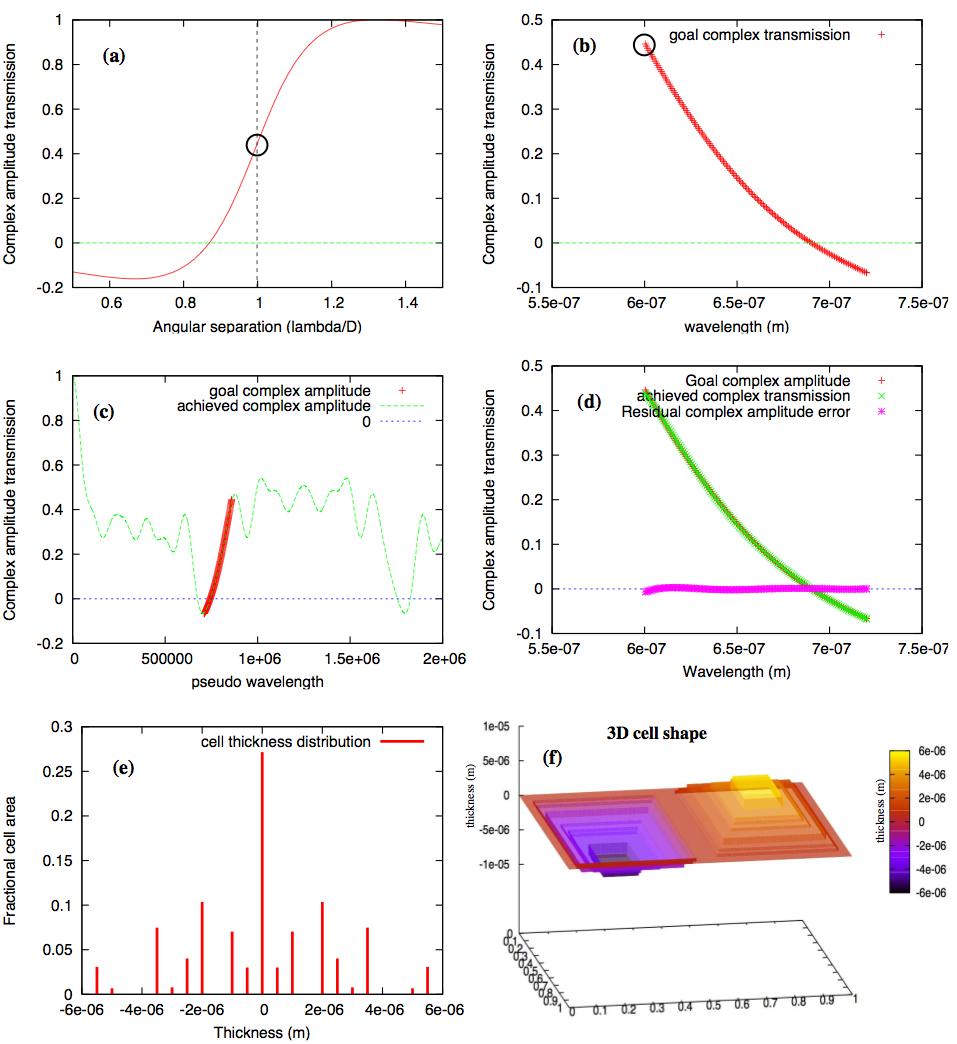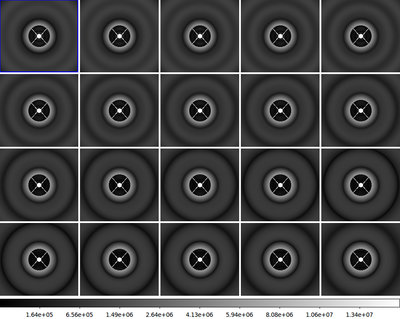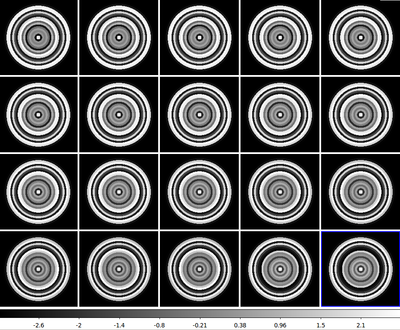Polychromatic focal plane mask designs
Coronagraph focal plane masks for broadband light
Polychromatic focal plane mask designsCoronagraph focal plane masks for broadband light |
 |
Home |
Show content only (no menu, header)Polychromatic Focal Plane Masks for Coronagraphysource code in module chromat_mask. Chromaticity issues in coronagraphic focal plane masksIn most coronagraph designs, the focal plane mask only works in monochromatic light, and performance rapidly decreases as the spectral bandwidth increases, especially at high contrast (example: imaging of Earth-like planets from space). There are two main problems:
Proposed solution: a chromatic diffraction gratingA solution to this problem is to design the focal plane mask as a diffraction grating with exactly the desired on-axis transmission (phase and amplitude) as a function of lambda. The technique is described in this paper (draft).
An example is shown in the figure below and is detailed in the paper.  Design of circular multi-ringed masksIn this particular family of design, a highly efficient PIAACMC coronagraph designed for monochromatic light is used as the starting point, offering an IWA somewhat below 1 lambda/D and a full throughput. Its monochromatic light focal plane mask design is a single disk, partially transmissive and introducing a PI phase shift. For broadband light opimization, the circular focal plane design is replaced by concentric rings. The number of rings is fixed, and their width is constant. The material used for the mask is also fixed, yielding a fixed phase shift - vs - wavelength relationship for any given local thickness of the material. The free parameters are the thicknesses of material for each ring, so there are as many free parameters as there are rings. The optimization criteria is the focal plane contrast in the absence of errors in the system. A computationally efficient algorithm to optimize multi-ringed masks for polychromatic light performance was developped, relying on the linearity in complex amplitude between the input and output of any optical system. A small number of points is selected in the output focal plane of the coronagraph to measure performance (typically 20 points). In this present family of designs, the circular symmetry of the problem is exploited: the points are located on a radial line, and equally spaced from the coronagraph IWA to the OWA used for performance estimation. The complex amplitude on each of these points is a linear function of the complex amplitude of each of the rings in the focal plane mask design. Large size (8kx8k to 4kx4k) Fourier transforms are used to compute the linear relationship between the two planes, which is stored in a small matrix.  
Example results are shown for a PIAACMC design on a centrally obscured pupil in the figure above. The right image shows the pupil Lyot plane flux, and the right image shows the focal plane mask phase. Each image shows 20 consecutive wavelengths covering a 20% bandwidth. The contrast in the absence of wavefront errors is below 1e-6 from 1 lambda/D outward. The next step will be to include the wavefront control system in the optimization process. The present level of chromatic errors has been pushed below the errors due to wavefront errors (imperfect optics). The wavefront control system will mitigate both sources of errors (imperfect optics and chromatic residual in the coronagraph design). Page content last updated: 27/06/2023 06:35:52 HST html file generated 27/06/2023 06:34:38 HST |